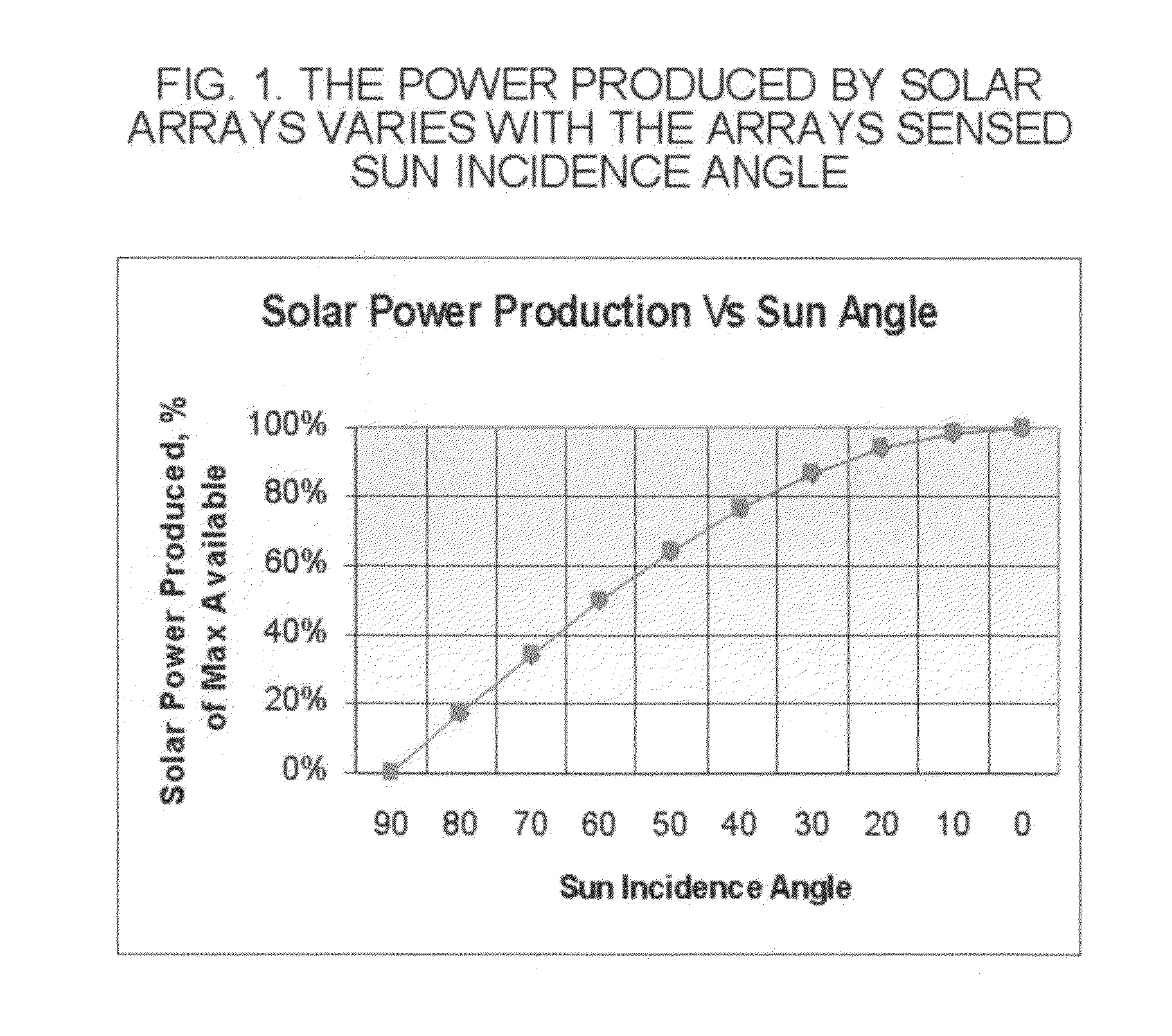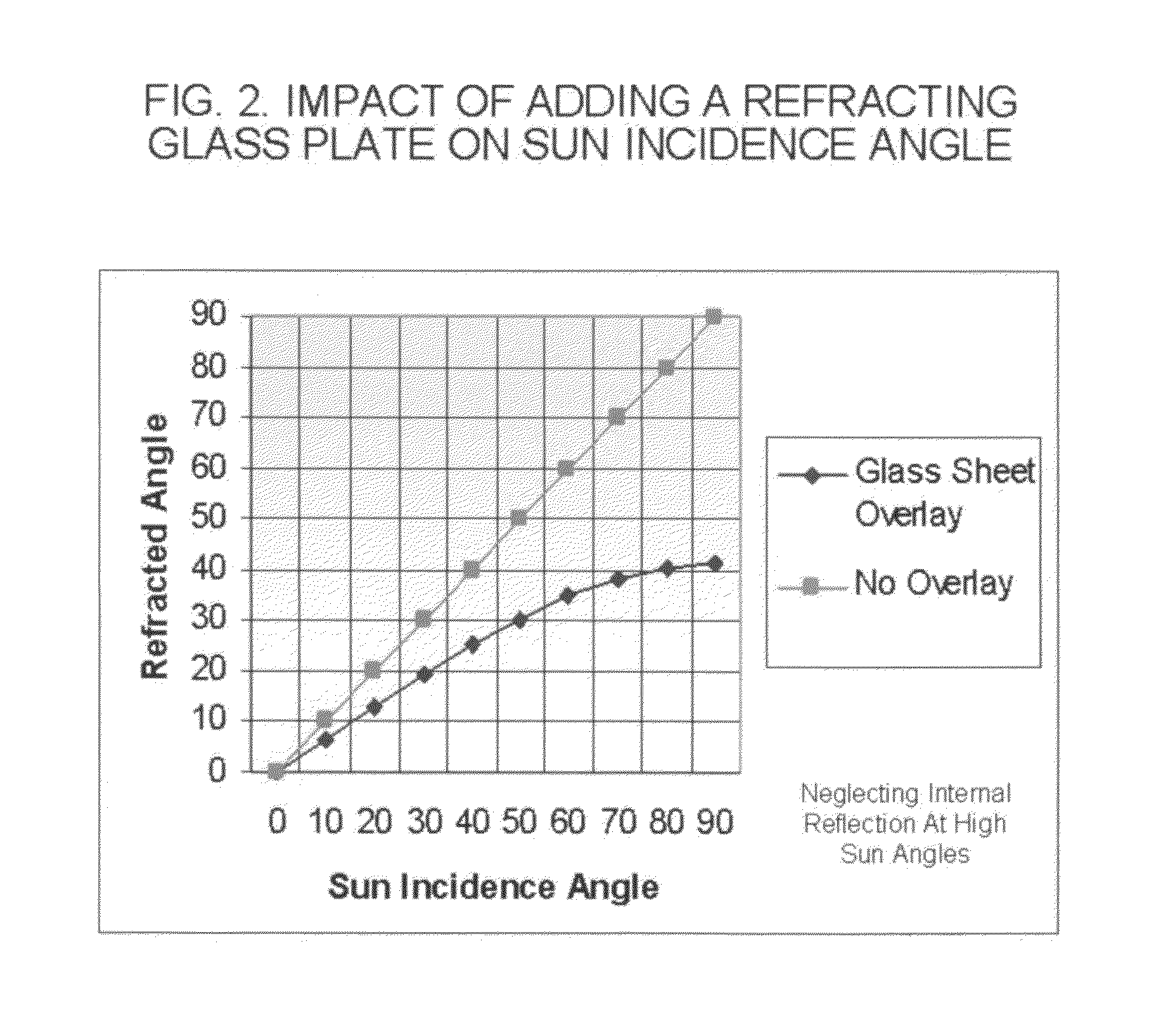Photovoltaic solar cell overlay
- Summary
- Abstract
- Description
- Claims
- Application Information
AI Technical Summary
Benefits of technology
Problems solved by technology
Method used
Image
Examples
Embodiment Construction
[0033]The purpose of the solar array overlay device is to capture solar energy normally unavailable to a fixed-position solar array at higher incident sun angles. Power produced by un-vectored solar power applications drops off sharply in the morning and afternoon due to the higher sun incident angles encountered. The device described herein utilizes one or more layers of transparent media joined in-plane to the solar array and imbued with specific optical characteristics capable of bending incident light towards the normal to the plane of the attached device. The overlays are comprised of light-bending optical materials such as dense glass, optical grade acrylics, polymers, or any other suitable high-transmittance media with adequate refractive, diffractive, or reflective characteristics. For typical terrestrial applications, the device layers are bonded to one-another and to the solar array without an air gap at the overlay-to-solar array interface. Any suitable bonding adhesive w...
PUM
 Login to View More
Login to View More Abstract
Description
Claims
Application Information
 Login to View More
Login to View More - R&D
- Intellectual Property
- Life Sciences
- Materials
- Tech Scout
- Unparalleled Data Quality
- Higher Quality Content
- 60% Fewer Hallucinations
Browse by: Latest US Patents, China's latest patents, Technical Efficacy Thesaurus, Application Domain, Technology Topic, Popular Technical Reports.
© 2025 PatSnap. All rights reserved.Legal|Privacy policy|Modern Slavery Act Transparency Statement|Sitemap|About US| Contact US: help@patsnap.com



